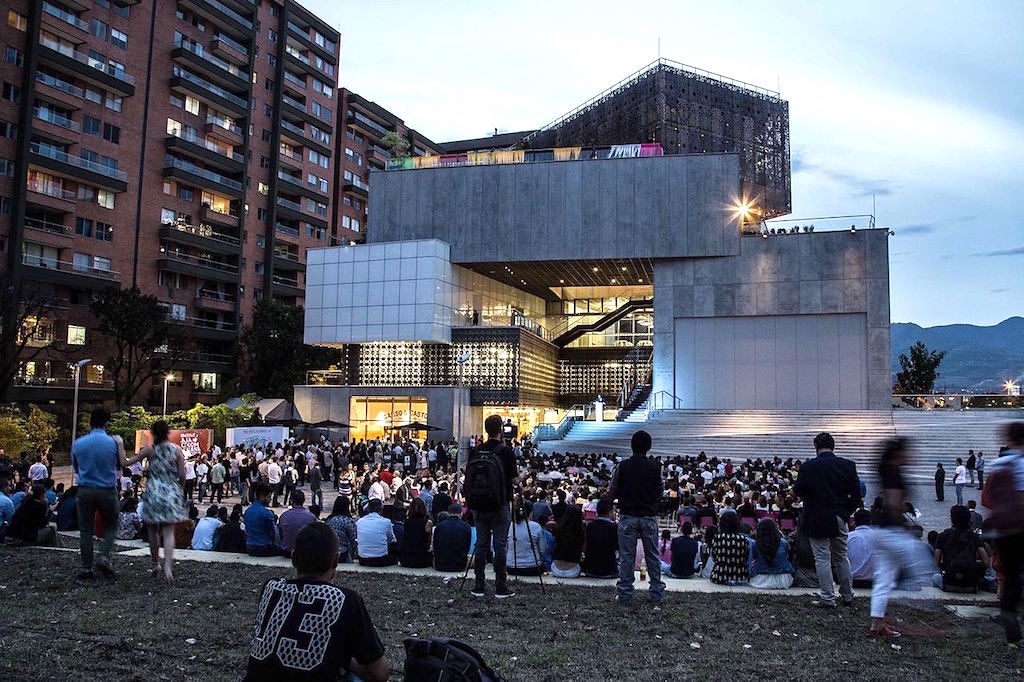Ten years ago this month, Scott Dalton, a freelance photographer, and Margarita Martinez, an AP reporter, set about the difficult and dangerous task of filming daily life in La Sierra, a neighborhood on the outskirts of Medellin.
The 84-minute documentary, named after the same barrio, follows three young characters, all involved in a paramilitary group called Bloque Metro.
Edison, aka “The Doll,” is a paramilitary commander in La Sierra. At the age of 22, he is also the de facto mayor of the neighborhood and a playboy who has fathered six children by six different women.
Openly dedicated to and excited by his life of violence, he is also an intelligent and charismatic young man.
An admitted killer, Edison himself is actually killed during the course of filming, when without warning, government forces fire upon him and a friend in the heart of their own neighborhood.
Cielo, age 17, was displaced from the countryside in sixth grade, when her brother and father were murdered by guerillas. A mother at the age of 15, she was widowed when the father of her son (a gang member) was killed.
Now Cielo is devoted to a new boyfriend, a paramilitary, who she visits in jail every Sunday. With little or no money to her name, Cielo goes downtown to beg and sell candies on the buses, resisting her friend’s suggestion of prostitution.
After her rocky relationship with her boyfriend unravels, Cielo finally gives in and takes a job in Medellin’s red light district.
And lastly, there is Jesus.
Jesus, 19, is a mid-level paramilitary member. Badly wounded when a homemade grenade blew up in his hands and face, Jesus presents himself as ready for death at any moment and hoping for little more than the opportunity to continue indulging his taste for marijuana and cocaine.
But as the war in La Sierra comes to a end, and the paramilitaries begin a government-sponsored disarmament process, Jesus dreams of beginning a life without war.
La Sierra brings us face to face with these primary characters, as well as their friends and family. I was especially struck by the prevalence of young teenage pregnancy captured in the documentary.
And then there’s the drug use, which is openly depicted, and the use of firearms, including pistols, shotguns, and machine guns. One guy is even seen handling a grenade.
In one scene, Edison is seen firing his machine gun (which looked similar to an M16) into the darkness. Cut to what appears to be the next day, and we see a little old woman, lying face down in the street, with a gaping bullet hole in her left side. Another innocent victim caught in the crossfire.
By the end of 2003, peace arrives in La Sierra, as the paramilitaries and government reach an agreement to disarm. Despite the poverty, violence, and death depicted, the documentary tries to end on a positive note.
In August 2009, a Colombia Reports article highlighted a 12-minute documentary made by students in La Sierra, showcasing the positive sides of living in the neighborhood.
Below (as long as it remains available on YouTube), is the full documentary with English subtitles. Warning: there’s some violent imagery.
La Sierra (with English subtitles) is also available on Amazon. The DVD is costly, at $24, but if you are located within the USA, you can also rent it online through Amazon Instant Video for just $2.99.












I remember when I watched that documentary the first time. I could not believe those things were happening less than 40 minutes away from me. I was pretty young back then, but not much younger than the guys at the documentary.
What really surprised me was that I never heard of it on the news. It was like a totally different city and life within Medellin, a different dimension, another planet.
That neighborhood will always have violence problems I just read on the news paper of a shooting yesterday close to a school.
I see the buses downtown that go to la sierra, and see the people making the line to do there.
Nowadays we have something called “fronteras invisibles” or invisible borders, it’s when one gang’s territory ends and another’s begins but it’s on the same area. The cops can’t go there because it’s too dangerous, even for them.
I was telling a paisa friend of mine about the movie, and she’d seen it too. She also said that when she was younger, she was completely unaware of La Sierra too.